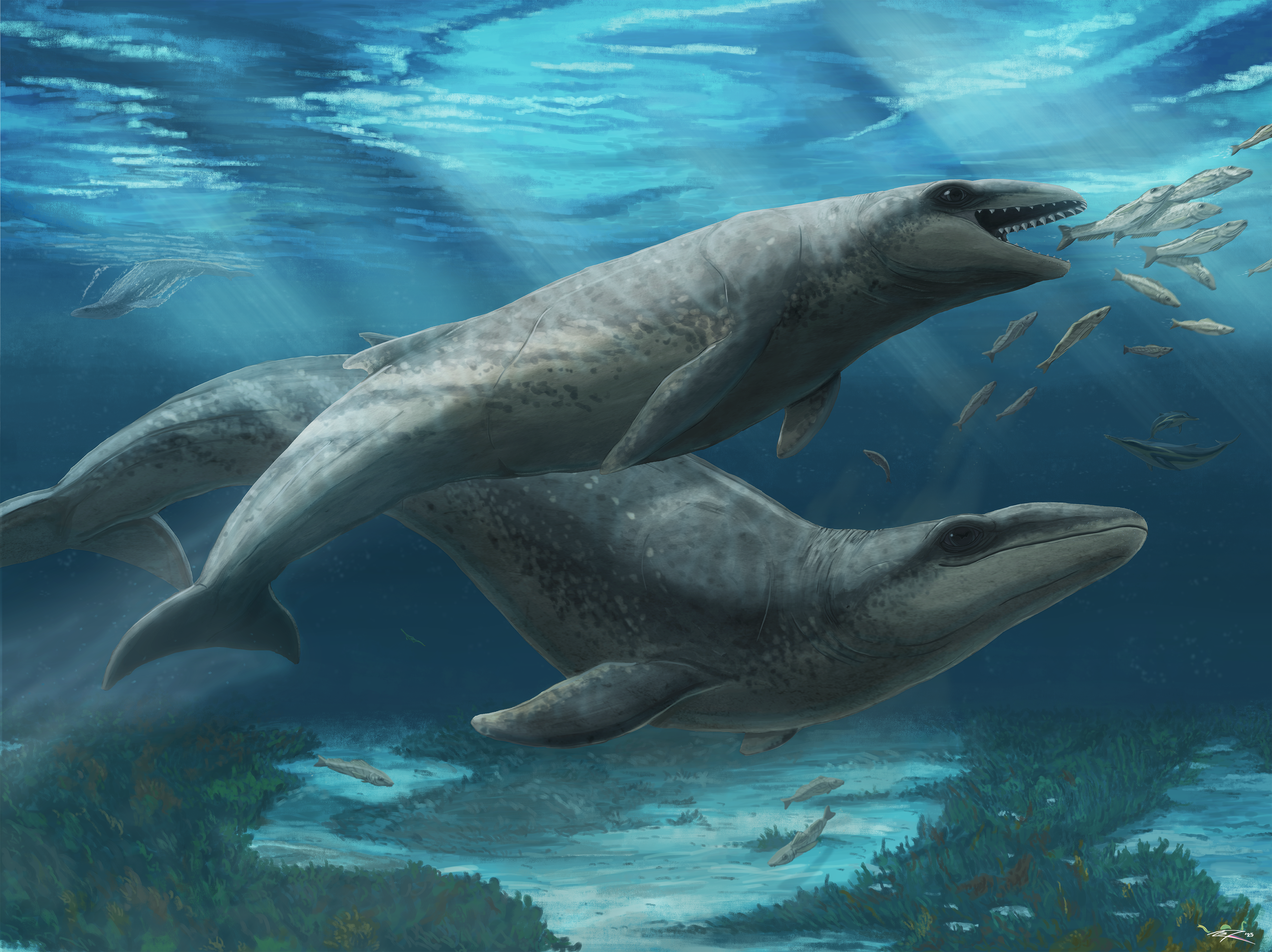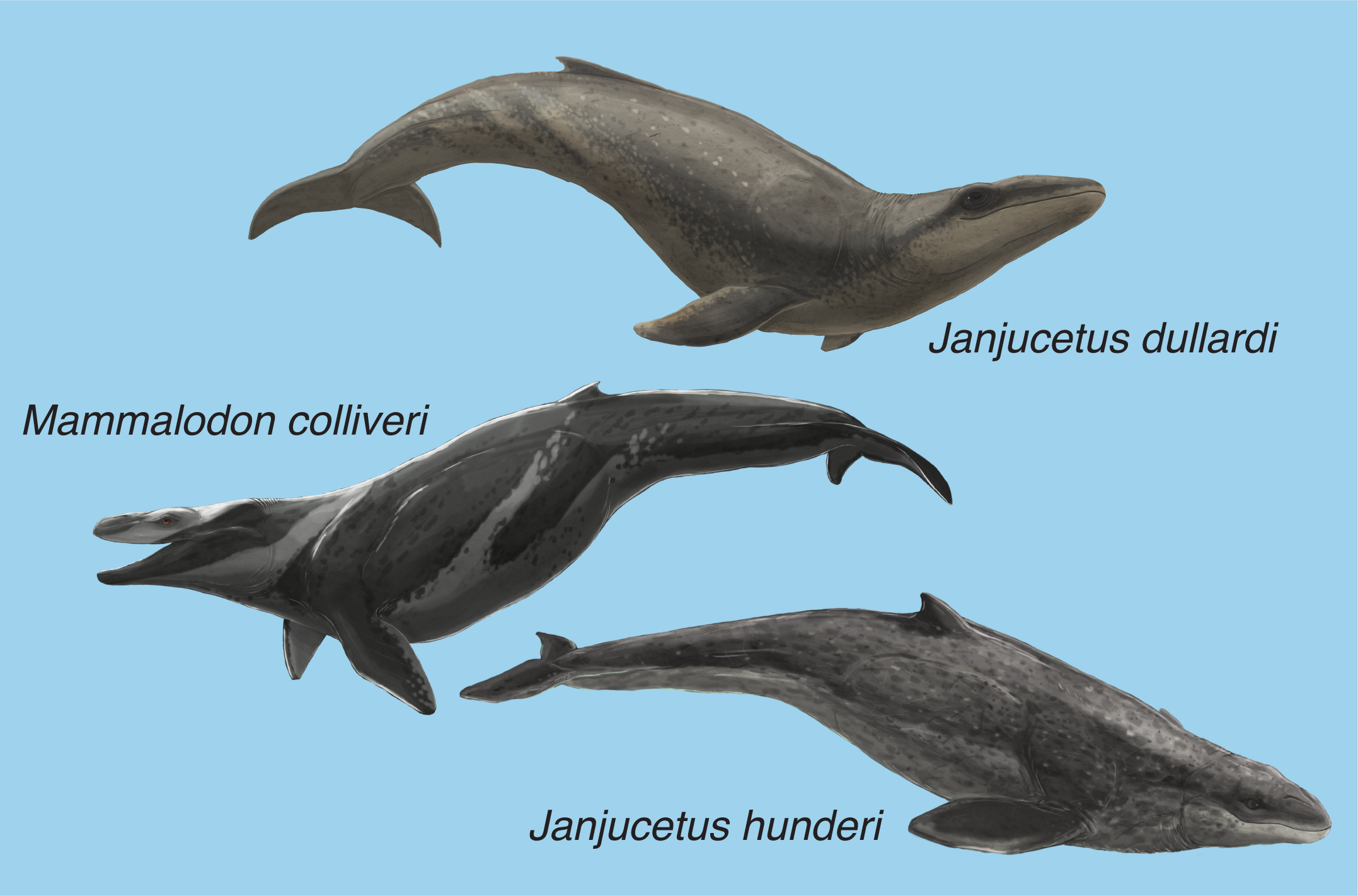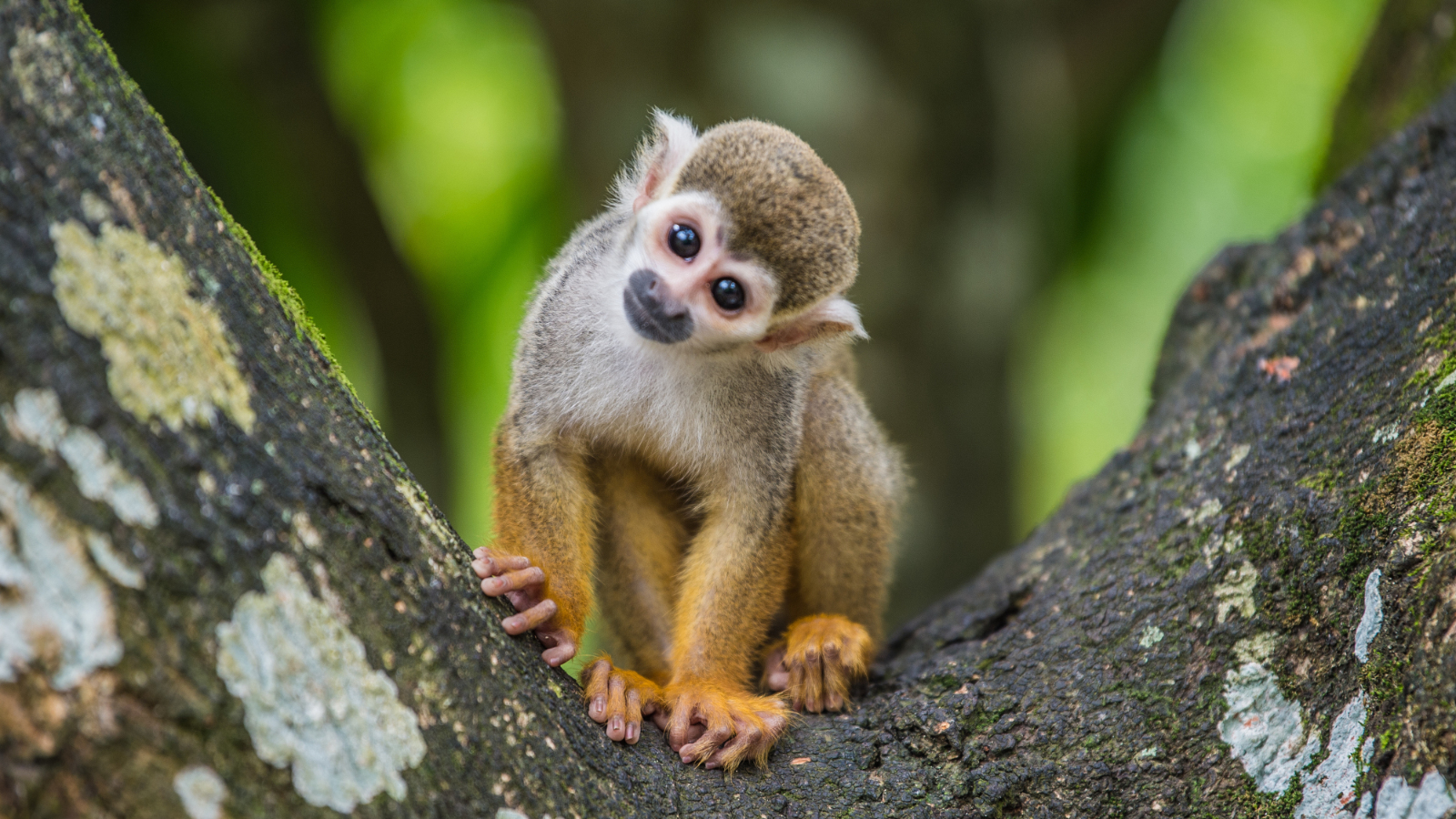Ancient predatory whale with big eyes and razor-sharp teeth was 'deceptively cute'
Researchers have unveiled the fossils of a juvenile ancient whale that hunted off ancient Australia with large forward-facing eyes and razor-sharp teeth.

Scientists have discovered a "deceptively cute" ancient whale with large eyes and razor-sharp teeth that devoured prey off Australia around 26 million years ago.
The newly discovered Janjucetus dullardi is one of the earliest known cousins of filter-feeding baleen whales, including the gigantic blue whale (Balaenoptera musculus). However, J. dullardi was much smaller than its living relatives, with a compact body built for speed.
Researchers identified this new species from pieces of skull found on the coast of southeastern Australia. The individual it belonged to was a juvenile or subadult, around 7 feet (2.1 meters) long, according to a study published Tuesday (Aug. 12) in the journal Zoological Journal of the Linnean Society.
"It's essentially a little whale with big eyes and a mouth full of sharp, slicing teeth," study lead author Ruairidh Duncan, a paleontology doctoral student at the Museums Victoria Research Institute and Monash University in Australia, said in a statement. "Imagine the shark-like version of a baleen whale — small and deceptively cute, but definitely not harmless."
Related: Ancient whale 'graveyard' discovered under melting Russian glacier
J. dullardi belonged to a family of small whales called mammalodontids, which lived in warm, shallow waters off Australia and New Zealand during the Oligocene Epoch (33.9 million to 23 million years ago). This is not long, in evolutionary time, from when the ancient ancestors of today’s whales first returned to the ocean some 50 million years ago.
A school principal named Ross Dullard first spotted the J. dullardi fossils while walking along the beach of Half Moon Bay, near Melbourne, in 2019. The fossils were exposed at the base of a wave-eroded rock outcrop — part of a geological formation known as the Jan Juc Marl, which is between about 24 million and 28 million years old. After discovering the fossils, Dullard donated them to Museums Victoria.
Get the world’s most fascinating discoveries delivered straight to your inbox.
"This kind of public discovery and its reporting to the museum is vital," senior study author Erich Fitzgerald, a senior curator of vertebrate paleontology at the Museums Victoria Research Institute, said in the statement. "Ross' discovery has unlocked an entire chapter of whale evolution we've never seen before. It's a reminder that world-changing fossils can be found in your own backyard."

Researchers used photography, microCT scans and other techniques to perform a detailed analysis of the fossils, which included preserved teeth and inner ear structures. The team deduced that J. dullardi was a previously unknown species of mammalodontid and named it after Dullard. One of the reasons researchers could tell it was a young whale was because of a lack of wear on the teeth.
Southeastern Australia has become a hotspot for ancient whale fossils, with two other mammalodontid species recovered from the Jan Juc Marl formation. Researchers continue to find fossils in this region and expect more discoveries in the years ahead, according to the statement.
"This region was once a cradle for some of the most unusual whales in history, and we're only just beginning to uncover their stories," Fitzgerald said.

Patrick Pester is the trending news writer at Live Science. His work has appeared on other science websites, such as BBC Science Focus and Scientific American. Patrick retrained as a journalist after spending his early career working in zoos and wildlife conservation. He was awarded the Master's Excellence Scholarship to study at Cardiff University where he completed a master's degree in international journalism. He also has a second master's degree in biodiversity, evolution and conservation in action from Middlesex University London. When he isn't writing news, Patrick investigates the sale of human remains.
You must confirm your public display name before commenting
Please logout and then login again, you will then be prompted to enter your display name.


